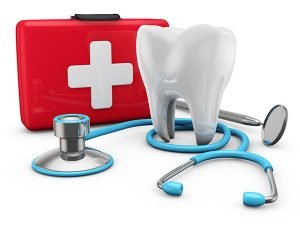First Aid For A Knocked-out Tooth
 One of the most obvious, painful, and worrisome dental emergencies is a knocked out, or “avulsed”, tooth. An avulsed tooth requires immediate treatment, or all chance the tooth can be saved will be lost.
One of the most obvious, painful, and worrisome dental emergencies is a knocked out, or “avulsed”, tooth. An avulsed tooth requires immediate treatment, or all chance the tooth can be saved will be lost.
At Bondi Dental, we are experts in all aspects of tooth-care, including re-inserting and saving avulsed teeth.
Why is an Avulsed Tooth Such a Big Problem?
The accidental loss of a tooth is a serious dental emergency for a permanent tooth, and can easily lead to its permanent loss.
An avulsed tooth has no oxygen or bloodflow and will die quickly if not re-implanted. The avulsed tooth will always need to be splinted to the other teeth, and usually, but not always, require a root canal. The speed in which the tooth is re-implanted, the cleanliness of the tooth, and how hydrated or wet it has been kept all play key roles in whether or not re-implantation of the avulsed tooth will be successful.
Instructions for an Avulsed Tooth
An avulsed tooth should be re-implanted within 60 minutes of the accident for the best chance of a positive outcome. It is important to keep the root surface of the avulsed tooth moist. This is one reason for the need for speed when re-implanting the tooth.
The best option for a tooth that has not suffered a major fracture is to attempt re-implantation within the first few minutes after the accident has occurred.
If the avulsed tooth is dirty, it is important to clean it. The best way is with the patient’s own saliva by putting it in their mouth. Once the tooth is cleaned in this manner the patient should spit out any blood and dirt in mouth. The tooth can also be rinsed with cold water or milk. When the avulsed tooth is as clean as possible, it should be placed back in the socket as soon as possible.
For an avulsed primary tooth re-implantation should normally not be attempted. For a permanent tooth quick action gives a chance the avulsed tooth can be saved and maintained for many years.
If the avulsed tooth cannot be repositioned in its socket for any reason, then it should be brought to the dentist as soon as possible.
- An avulsed tooth should be rinsed and cleaned as noted above. The victim should then hold the avulsed tooth in their mouth. The avulsed tooth can be held under the tongue, between the cheek and back teeth, or between the lip and front teeth. Young children can swallow a loose tooth. In this case, the avulsed tooth should be rinsed and placed in milk, or in water with salt.
- After cleaning with saliva, the avulsed tooth can be placed in a solution of water and salt. A half a teaspoon of salt should be mixed in a cup of water, bottled water if available.
- The avulsed tooth can also be placed in fresh room temperature milk. The patient and avulsed tooth in solution should be brought to the dentist as soon as possible
- There are also commercial products available for the storage of an avulsed tooth.
These instructions are for adult teeth only. If a primary tooth (“baby tooth”) has avulsed the re-implantation can actually be dangerous.
If the adult avulsed tooth is broken or has visible fractures following the trauma, and or its root remained in the socket, the re-implantation will not be successful.
At the Dentist’s Office
Putting the avulsed tooth back in its socket can be quite easy. Unfortunately, sometimes it is very complicated, such as when the tooth or bone is fractured or broken. Your dentist may use water to flush debris from the socket. Then they will attempt to push the avulsed tooth back into place. If the tooth can be re-inserted, the dentist will splint the avulsed tooth to the teeth on either side with a soft wire and/or a resin material. This will be used to hold the tooth in place.
If the surrounding bone was not fractured, the root usually will reattach firmly to the bone in about three to four weeks. More extensive damage to the area may need 6-8 weeks of healing time.
Your dentist will examine the tooth again in three to six months to ensure the tooth is healthy, with no evidence of infection or other trouble. If all is well, the next visit will be at your schedule dental checkup. The dentist will then continue to monitor the tooth for the next 2-3 years to ensure that the tooth re implanted successfully.
Emergency Dentist in Bondi
If your tooth has been knocked-out, Bondi Dental is here to assist you with dental emergencies 24 hours per day, 7 days per week in our modern, comfortable, and professional dental centre. Our dental clinic is open from Mondays to Sundays, 8:00AM to 8:00PM.
For immediate pain relief, call your Bondi dentist on (02) 9365 7187 or visit us at 134 Curlewis St in Bondi Beach.
